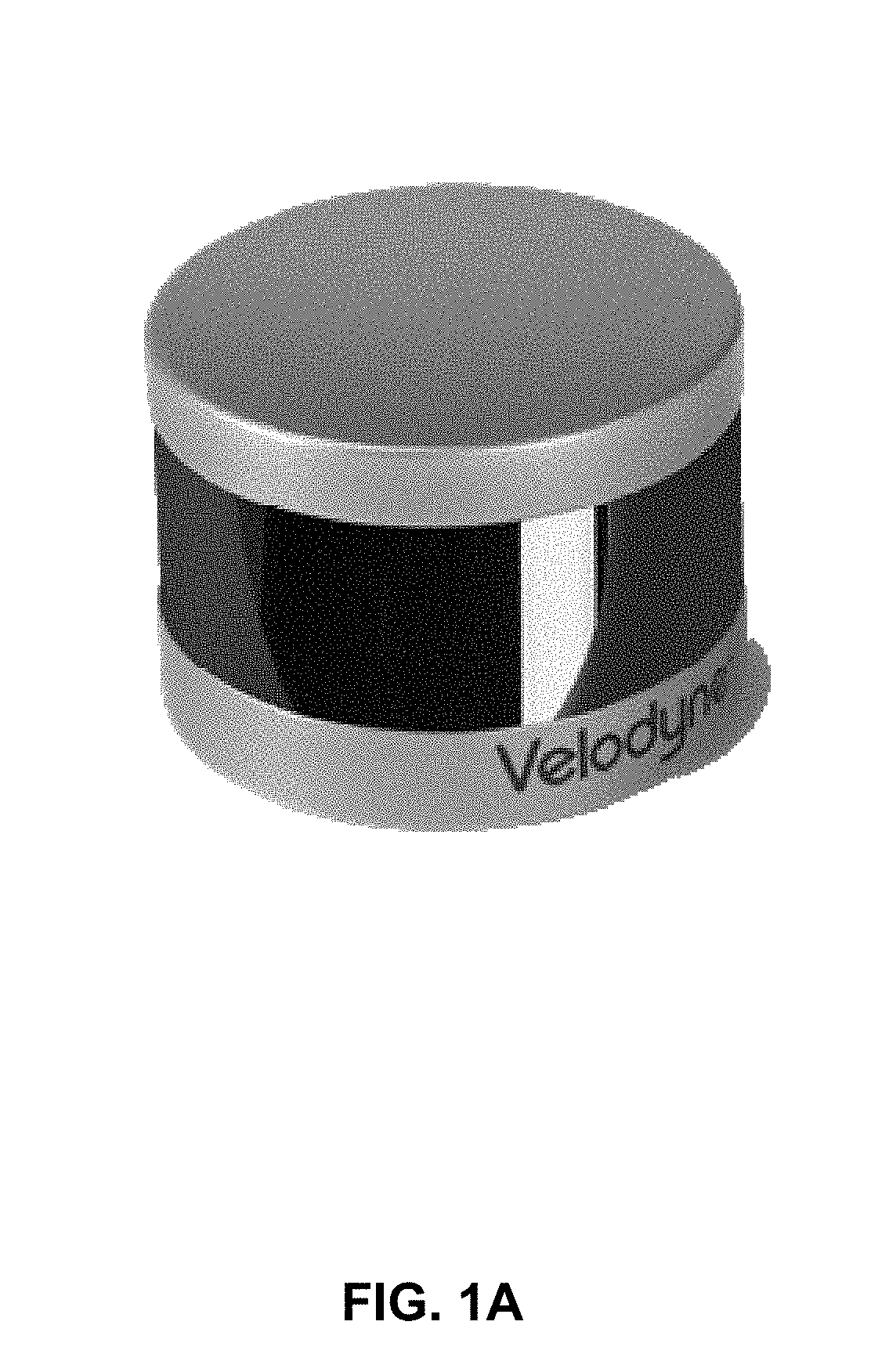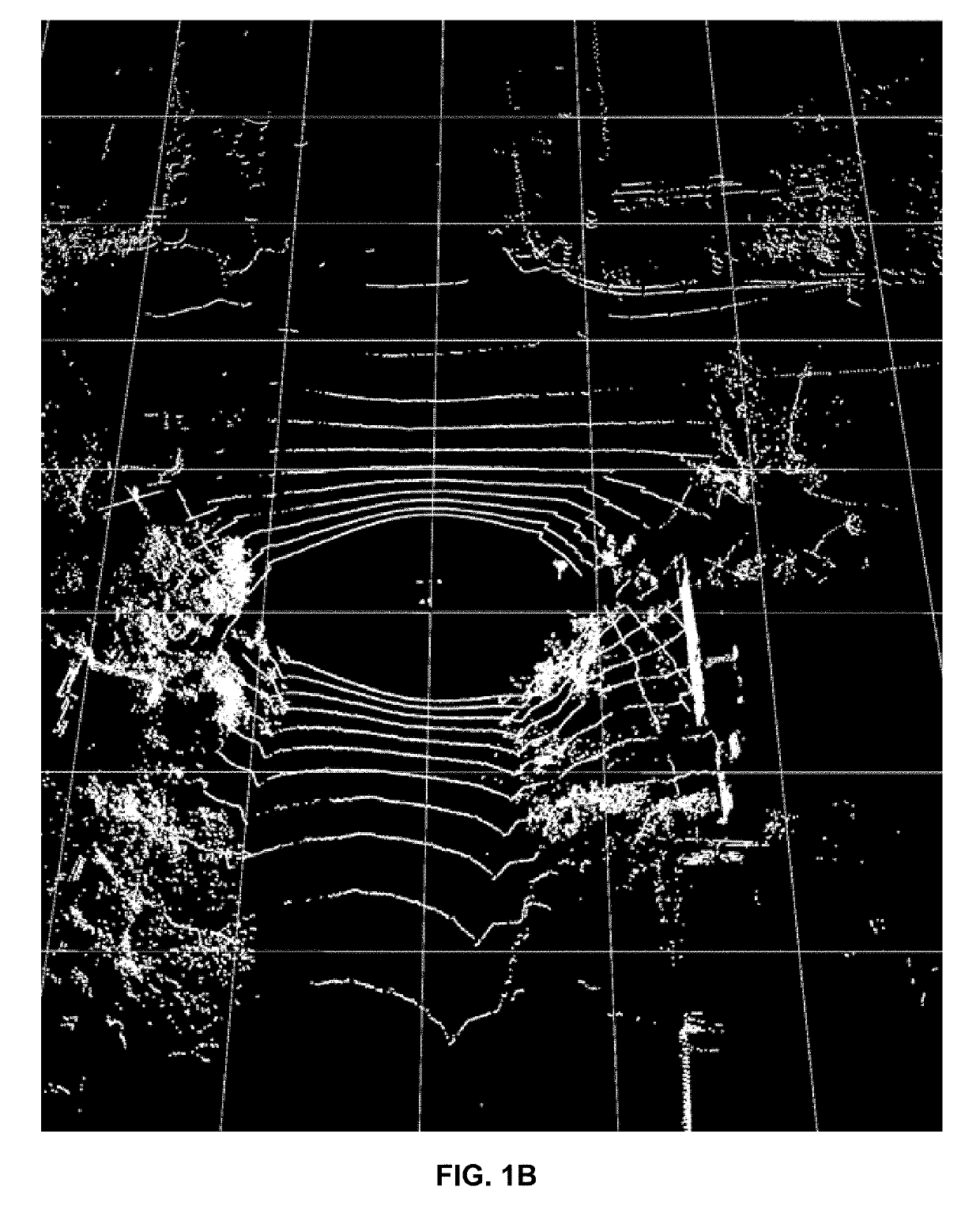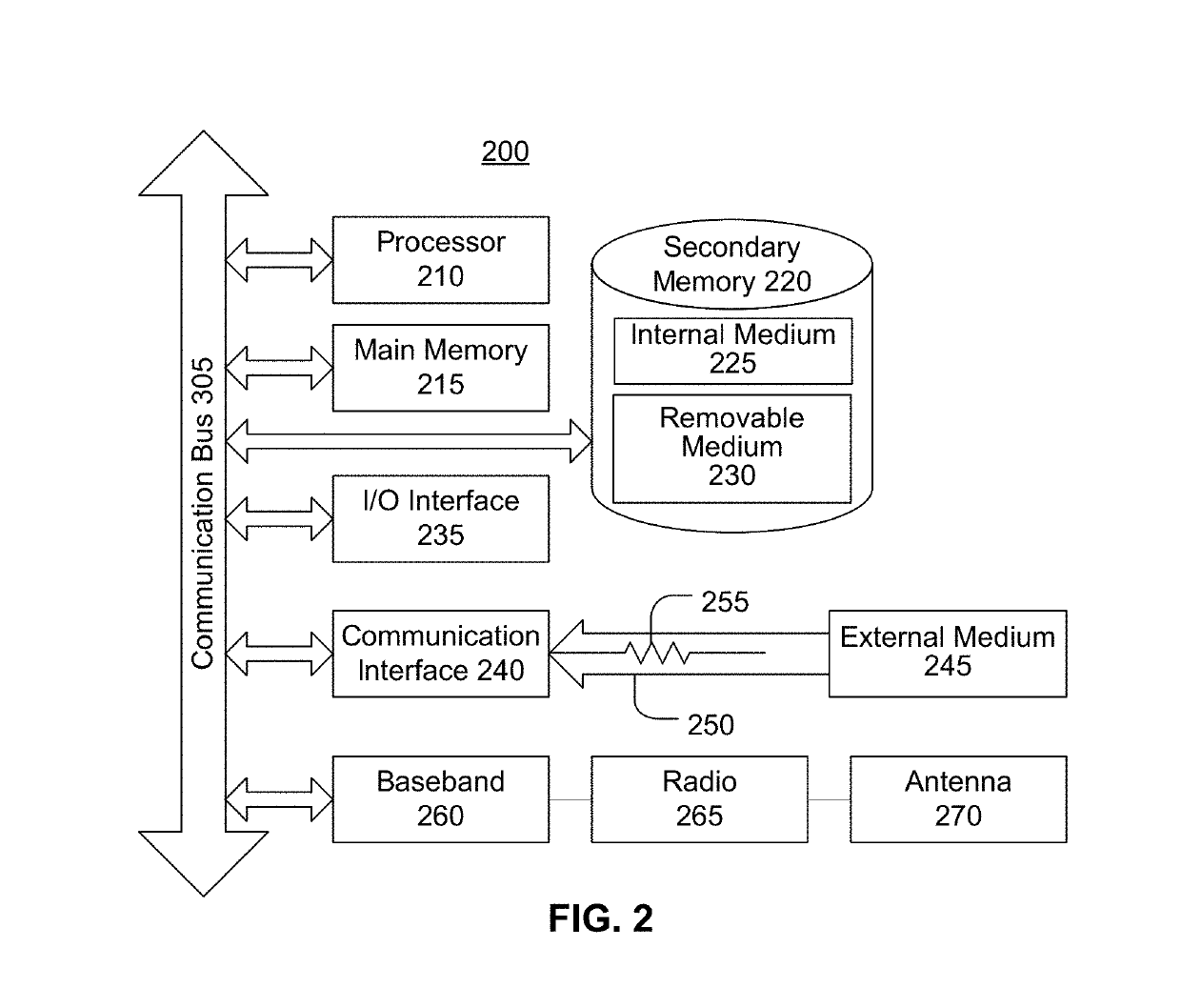Efficient and scalable three-dimensional point cloud segmentation for navigation in autonomous vehicles
a technology of autonomous vehicles and point clouds, applied in the field of three-dimensional (3d) point cloud segmentation, can solve the problems of large runtime, unsuitable for fast, embedded, multiple input scenarios, and use of such solutions in high-resolution, high-speed, or real-time applications
- Summary
- Abstract
- Description
- Claims
- Application Information
AI Technical Summary
Benefits of technology
Problems solved by technology
Method used
Image
Examples
Embodiment Construction
[0025]In an embodiment, systems, methods, and non-transitory computer-readable media are disclosed for scalable 3D-point-cloud segmentation. After reading this description, it will become apparent to one skilled in the art how to implement the invention in various alternative embodiments and alternative applications. However, although various embodiments of the present invention will be described herein, it is understood that these embodiments are presented by way of example and illustration only, and not limitation. As such, this detailed description of various embodiments should not be construed to limit the scope or breadth of the present invention as set forth in the appended claims.
[0026]1. System Overview
[0027]1.1. Example Processing Device
[0028]FIG. 2 is a block diagram illustrating an example wired or wireless system 200 that may be used in connection with various embodiments described herein. For example, system 200 may be used as or in conjunction with one or more of the m...
PUM
 Login to View More
Login to View More Abstract
Description
Claims
Application Information
 Login to View More
Login to View More - R&D
- Intellectual Property
- Life Sciences
- Materials
- Tech Scout
- Unparalleled Data Quality
- Higher Quality Content
- 60% Fewer Hallucinations
Browse by: Latest US Patents, China's latest patents, Technical Efficacy Thesaurus, Application Domain, Technology Topic, Popular Technical Reports.
© 2025 PatSnap. All rights reserved.Legal|Privacy policy|Modern Slavery Act Transparency Statement|Sitemap|About US| Contact US: help@patsnap.com



